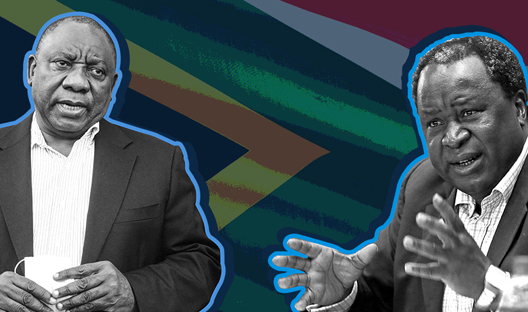Key take-outs
- Facing up to a two-year shortfall of R159bn
- Overview of revenue, expenditure and the deficit
- The likely tax measures to be adopted – including indirect taxes and bracket creep
- The costs of free tertiary education
- Sticking to the spending ceiling
- Higher GDP revisions could provide some support
- Risks posed by state-owned enterprises
- Why a sustained growth recovery is so important

Get all Investec's insights on the latest Budget Speech and SONA
Our economists, tax experts, personal finance and investment experts unpack what the latest fiscal measures mean for income, savings and daily expenses of individuals and businesses.
Summary
To avoid further credit rating downgrades, the 2018 Budget will need to implement material revenue and expenditure side adjustments if it is to achieve the goal of fiscal consolidation over the medium-term.
The postponement of fiscal consolidation in the 2017 Medium Term Budget Policy Statement (MTBPS) and the absence of any stabilisation of debt ratios had been viewed as credit negative by the rating agencies.
Read more: Gigaba stalling on tough decisions until the ANC elective conference
This was despite the worsening deficit and debt outlook outlined in the MTBPS last year: in the absence of a fiscal adjustment package, the consolidated Budget deficit would rise to 4.3% of GDP in 2017/18 from 3.4% in 2016/17 and would remain at 3.9% over the medium term framework period of 2018/19 to 2020/21. Gross and net loan debt were seen rising throughout this period to 59.7% and 55.6% respectively in 2020/21.
Our projections show that a combination of revenue and expenditure side measures, along with slower CPI inflation and slightly higher nominal GDP growth, will yield a consolidated budget deficit of 4.0% of GDP in 2018/19. The deficit is then forecast to compress to 3.4% of GDP in 2019/20 and 2020/21, thanks to fiscal consolidation.
Tightening of fiscal levers (adjustments to revenue and expenditure projections) will be a key component of the task of rebuilding confidence and avoiding further credit rating downgrades.
Beyond this, the 2018 Budget will need to elaborate on the other “short-term confidence-boosting measures” outlined in the 2017 MTBPS. These include further detail on managing “fiscal and economic risks associated with state-owned entities”; and creating “policy certainty by finalising key legislative and policy processes”.
Making up the shortfall
A statement by National Treasury in November last year further outlined that “… additional spending cuts or tax increases of R40 billion (0.8 percent of GDP), would be required from 2018/19, in order to stabilise public debt below 60 percent of GDP over the next decade.” A “package of measures to this effect” is expected to be outlined in the 2018 Budget.
This R40bn fiscal adjustment would be in addition to the consolidation measures previously announced in the 2016 and 2017 Budgets. These include expenditure cuts of R31bn and revenue increases of R15bn.
The 2017 MTBPS confirmed a substantial revenue shortfall, of an estimated R50.8bn in 2017/18 and an additional shortfall of a combined R158.7bn in 2018/19 and 2019/20. The revenue under-collection has been apparent across all of the major tax categories and is linked to weak economic growth and diminished tax buoyancy.
The additional revenue will likely be raised through a combination of tax adjustments, other than increases in personal and corporate tax rates.

The 2017 MTBPS cautioned that because “per capita income is falling, the economic impact of further… tax hikes could be counter-productive”. This would suggest a reluctance to hike personal income tax rates.
Although an increase in the marginal income tax rates at the high end cannot be completely precluded, the OECD has previously cautioned that “relatively few individuals face the top marginal tax and so increasing the top rate alone would yield relatively little revenue”. Large increases in the top rate could have “detrimental effects on skill accumulation, entrepreneurial activity and immigration of high-skilled workers.”
Revenue and spending outcomes
In the meantime, the 2018 Budget should broadly confirm the revenue and expenditure outcomes outlined in the MTBPS. In particular, the MTBPS estimated a tax revenue shortfall of R50.8bn. Based on data available to date, this estimate remains valid. Applying year to date growth rates to the prior fiscal year’s tax revenue yields a gross tax revenue shortfall of R50.5bn. Employing the same method to overall main budget revenue reflects a shortfall of R47.4bn, to R1 195bn, relative to 2017 Budget estimates.
Expenditures rose 8.0% y/y in the first nine months of the fiscal year, exceeding the 2017 Budget estimate of 7.9% y/y growth for the full fiscal year. Projections based on this year to date expenditure growth suggest overspending of R3.9bn, which is mainly attributable the government bailouts of South African Airways (SAA) and the South African Post Office (SAPO), which totalled R13.7bn. However, this amount is partially offset by a projected underspending in the current fiscal year and a drawdown of the contingency reserve.
The revenue and expenditure side estimates outlined above would yield a main budget deficit of R218bn which translates to a deficit of 4.6% of GDP versus the 4.7% MTBPS estimate. The consolidated budget deficit is estimated to be 4.3% of GDP, in line with MTBPS projections.
The MTBPS noted that “the disposal of assets to offset these appropriations” is being considered. The Minister’s speech made reference to the decision to dispose of a portion of government’s Telkom shares. The 2018 Budget will confirm whether the asset sales transpired.
Corporate tax, VAT and other indirect taxes
Corporate income tax rates are also likely to remain unchanged. The corporate tax burden is relatively high by international comparison, according to the OECD.
Raising corporate taxes would weaken the prospects for a recovery in private sector employment levels and fixed investment rates in the current economic climate. However, efforts to address base erosion and profit shifting are likely to continue.
With the 2017 MTBPS not indicating a potential increase in personal or corporate tax rates, it can be inferred that the additional revenue is likely to be raised via bracket creep adjustments, indirect taxes and within the wealth tax spectrum.
Raising corporate taxes would weaken the prospects for a recovery in private sector employment levels and fixed investment rates in the current economic climate.
As such, personal income tax brackets and thresholds are likely to be increased well below expected inflation. This will translate into little-to-no fiscal drag relief and thus an increase in the real effective personal income tax rate.
Although a VAT rate hike in the forthcoming Budget cannot be completely precluded, it is not expected ahead of the 2019 elections. The proceeds of any VAT rate hike would, in any case, be expected to be earmarked for the funding strategy for government reform programmes such as National Health Insurance.
It is therefore expected that tax adjustments in the 2018 Budget will be concentrated in the other indirect tax category.
Changes to the Estate Duty rate are also possible. The Davis Tax Committee (DTC) has also recommended further increases in the capital gains tax inclusion rates for corporates and an increase in the skills development levy. This source of tax revenue would be earmarked for the funding of tertiary education.
Although a VAT rate hike in the forthcoming Budget cannot be completely precluded, it is not expected ahead of the 2019 elections.
Tertiary education
The DTC outlined that R30bn per year would be needed to fund tuition but calculates that if accommodation and other living expenses are included, the amount rises to R60bn. However, given the limited scope for significant tax increases, it is likely that any tertiary funding strategy would be implemented in stages, such that the expenditure ceiling is not breached.
Adhering to the ceiling
The 2018 Budget will have to signal an adherence to the nominal expenditure ceiling and ideally, intentions to further reduce the ceiling over the medium-term. The main measures taken to contain spending will likely include the reprioritisation of expenditure; cost containment measures on non-essential goods and services; procurement reforms and limits on compensation. Rising compensation, from the combination of expanded headcounts and higher remuneration, has been the key pressure point on the fiscus.
GDP growth to be revised higher
Compared with the 2017 MTBPS, nominal GDP growth forecasts are likely to be revised slightly higher on the expected improvement in domestic consumer and business sentiment, in view of the recent political developments, and the derived benefits of an increasingly synchronised global economic upturn. This would imply a slight upward revision to the nominal growth in gross tax revenue.
National Treasury is also likely to factor in the improved CPI inflation outlook linked to exchange rate appreciation.
SOE risks
There are sizeable fiscal risks associated with realising contingent liabilities and/or recapitalising state-owned enterprises (SOEs). Government’s major contingent liabilities relate to its guarantees and have risen since 2008/09, reflecting the deterioration in the balance sheet position of several SOEs and the absence of structural reform in governance and management of them. Guarantees to public institutions have risen from R298.4bn in 2009/10 to R477.7bn in 2016/17. Over the same period, exposure (the amount that SOEs have borrowed against the guarantees) increased from R129.1bn to R308.3bn. Realising these could push government debt levels from 54% of GDP to 70%.
Denel, South African Express and the South African Broadcasting Corporation are likely to require capital injections. However, the amounts are likely to be comparatively small with Eskom the more prominent risk. Eskom has used up two-thirds of the R350bn guarantees and continues to grapple with liquidity shortages.
It is encouraging that new boards have been instated at Eskom and SAA and that government is developing a “new framework for the management of guarantees” rendering it more stringent. However, the concerns surrounding rising SOE debt still need to be addressed.
The importance of growth
The 2017 MTBPS highlighted that faster and sustained economic growth is vital to improving the fiscal outlook and recommended the “(r)apid implementation” of measures aligned with the National Development Plan (NDP). In the absence of a sustained economic growth recovery to 3.0% and beyond, accomplishing fiscal consolidation will be difficult.
Effective policy implementation and the enhancement of policy certainty are required to restore business confidence and enhance the investment climate which would ultimately lift potential GDP growth.




